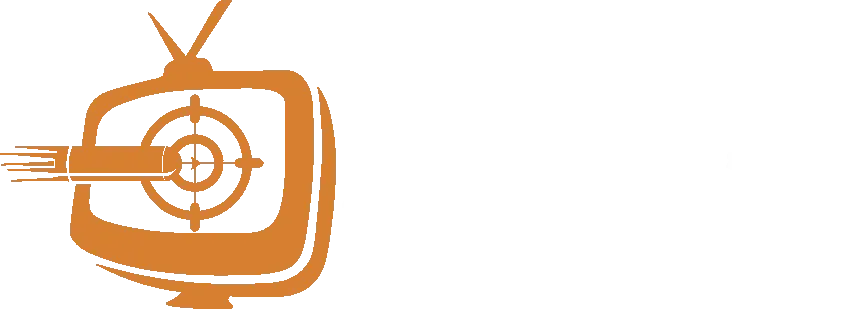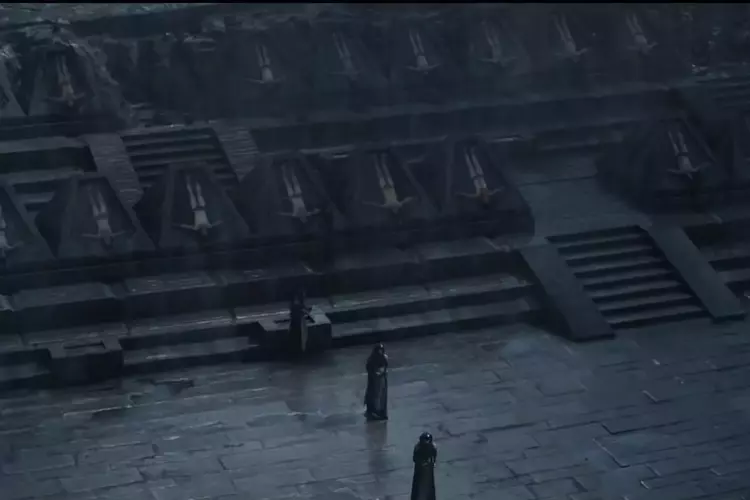What is Rurouni Kenshin?

Rurouni Kenshin is a Japanese Manga first published in 1992 that tells a story about Kenshin Himura. He is a former anti-shogunate assassin who has wandered the country like a vagrant, seeking atonement for his past sins. His main weapon is a katana with reversed sides to prevent killing anyone.
The story follows Kenshin’s journey into Tokyo during the eleventh year of the Meiji era. While there, he befriends the female Kendo master Kaoru Kamiya, the former thief Yahiko Myojin, the Sekihotai member Sanosuke Sagara, and the doctor Megumi Takani.
Along the way, Kenshin must battle enemies from his dark past. He was in the past, feared all throughout given the moniker “Battousai The Manslayer” or “Battousai The Slasher“. Many rivals wanted to fight him to test their skills as a swordsman or simply just because he supported the Meiji government.
Rurouni Kenshin’s journey is an apt metaphor for Japan’s attempt to come to terms with its past. After all, Japan’s involvement in World War II was so extreme that renunciation of violence became the most practical and efficient way to move forward. Kenshin’s move from a warlike life to a more civilized one sets up a core theme in the manga series: the need to reinvent society.
Why Is He Called Battousai The Slasher?
Although he is a fierce swordsman, Kenshin refrains from using it for his own purposes, drawing it only when words are no longer sufficient to appease his enemies. He also carries with him grudges against those who have wronged him in the past. Because of this, he considers himself unworthy of the same happiness as others.
Kenshin’s complete mastery of the Battojutsu, the sword technique using a slash from the sheath and has developed it so greatly that it is massively powerful and quick. After his reformation, he promised to never kill again which is why resorted to using a reversed-edged sword, or Sakabato.
Fortunately, Kenshin was raised by an exceptional fighter named Hiko Sejuro who taught him how to handle a sword. He inherited the Hiten Mitsurugi-Ryu sword style, a traditional Japanese martial art based on Kenjutsu that emphasizes godspeed and speed. The name Battosai refers to the slasher’s signature skill during battle, Battojutsu.
What’s the Rurouni Kenshin Anime Series?
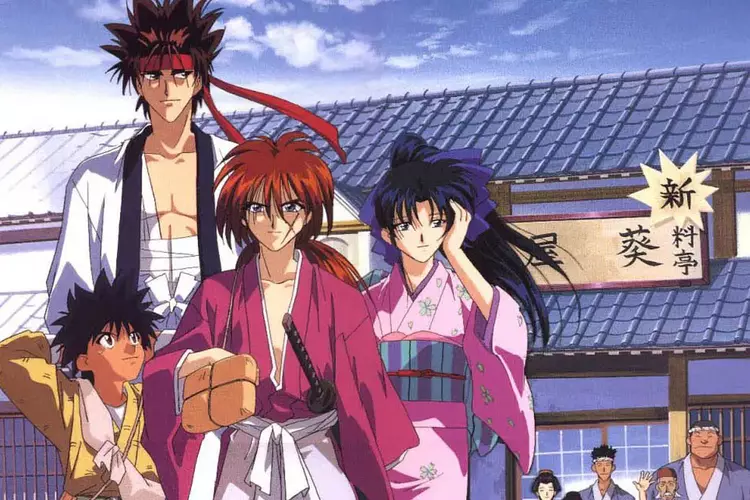
Rurouni Kenshin Characters (Anime Series)
Protagonists:
| Character | Role |
|---|---|
| Himura Kenshin | Battousai The Slasher |
| Kaoru Kamiya | Kenshin Love Interest |
| Myojin Yahiko | Impetuous Kid Pupil of Kaoru |
| Sagara Sanosuke | Kenshin’s Funny Sidekick |
| Megumi Takani | Kenshin’s Doctor Friend |
| Aoshi Shinomori | Kempo; Kodachi Nitou Ryuu |
| Saitou Hajime | Wolf of Mibu, Gatotsu |
| Makimachi Misao | Headstrong Female Ally |
| Hiko Seijuro | Kenshin’s Battojutsu Sensei |
Antagonists:
| Character | Role |
|---|---|
| Juppongatana | 10 Assassins Under Shishio Makoto |
| Shishio Makoto | Kenshi’s Main Arch-Nemesis |
| Sojiro | Shishio’s Protege And Best Fighter |
| Anji | Warrior Monk Fighter |
| Cho | Fighter With Many Swords |
| Usui | Blind Fighter Who Secretly Hates Shishio Too |
| Henya | Fighter Who Flies Drops Bombs |
| Iwanbo | Moron Fighter |
| Fuji | Giant Fighter |
| Senkaku | Big Fighter Who Uses Crescent Blades |
| Six Comrades | Group Who Wants Revenge On Kenshi |
This Rurouni Kenshin Anime series started as a short story without much research. Its creator wanted to draw swords and kimonos, and he was also a fan of Shinsengumi. However, the actual revolution was difficult to recreate and the creator wanted to do a more human drama. The hitokiri of the revolution had his own mind, repented for killing people, and was ultimately executed for refusing to submit to the government. It’s also worth noting that many of the moves were inspired by real martial arts.
Saito Hajime was introduced in the first episode as Kenshin’s ally during the Bakumatsu period. He later became the police officer Fujita Goro. Hajime’s coldness was a key part of the series’ plot, as the shogunate’s leaders were often a target. Hajime’s character also had some interesting traits. He was cold and often appeared cold in a comic-book style.
The early Meiji period of Japan is the setting for Rurouni Kenshin. The historical facts are accurate, and many important events of that time period are included. Many characters and events from this period were based on real people, including nationalist leader Okubo Toshimichi. In fact, the purge of Buddhist temples is the source of the character Anji.

In the second season, the Rurouni Kenshin anime focused on the “Kyoto Inferno” arc. The third season followed the samurai as he traveled around Japan in pursuit of the emperor. Rurouni Kenshin: Trust and Betrayal followed this, and its popularity continues to rise. A live-action film was also released.
Before it became an anime series, it was serialized in the Weekly Shonen Jump magazine. There are 28 tankobon volumes and 22 kanzenban volumes. The series was later adapted for television by Studio Gallop, and it aired in Japan from 1996 to 1998. In the years since the series first aired, three official light novels were published by Shizuka.
A manga adaptation was also released by Viz Media. It is subtitled “Wandering Samurai” in some English versions. As of 2019, over 72 million copies of the manga were in circulation. The series’ characters were well-designed, and it earned praise from multiple publications for its creativity. The manga series’ story revolves around the Meiji era, and the protagonist Kenshin is a renegade whose aim is to protect the innocent.
How Many Rurouni Kenshin Anime Episodes Are There?
There is 95 total anime series episodes total in 3 seasons.
- Rurouni Kenshin Season 1 – 27 Episodes (1-27)
- Rurouni Kenshin Season 2 – 36 Episodes (28-62)
- Rurouni Kenshin Season 3 – 32 Episodes (63-95)
How Many Rurouni Kenshin OVA Are There?
There are 2. OVA means (Original Video Animation) which is Japan’s term for Anime that went straight to video.
- Trust and Betrayal (1999)
- Reflection (2001)
Differences Between The Anime Series And The OVA
Storyline
The OVA is very deep, dark, and emotional in nature. It is solely Himura Kenshin’s personal battle with himself and his past as he begins to question his beliefs. This is where Kenshin starts to redeem and also forgive himself, giving him new meaning and purpose in life.
In the Anime Series, Kenshin fights for the people and his newfound convictions are stronger than ever. He no longer fights out of anger and hardened principles like Makoto Shishio, but out of faith and love for people and justice.
His journey is a fascinating one and it almost reflects Japan’s similar journey from being a battle-scarred nation from WW2 into a more progressive and responsible part of the global scheme of things.
In a nutshell, Battousai The Manslayer turns into Kenshin Himura, a helpful and kind protector of the weak who believes in change. From a seriously feared Assassin to a lovable, sometimes goofy hero who doesn’t take himself seriously most of the time.
Animation
The animation in the OVA looks softer, with more rounded edges. It also has a darker, almost sad-looking hue. Meanwhile, in the Anime Series, everything appears bright, sunny, and happy. This reflects the overarching themes of their respective storylines.
In Trust and Betrayal, it is more personal, and the only one he fights for and against is Tomoe and himself. In the Kyoto Arc, Kenshin is fighting for the Government and the welfare of the people against the evil Shishio Makoto.
Music
The music in the OVA, much like in the Animation, sounds deep, personal, and almost emotional. In the Anime Series, it’s lively pop music and even grandiose operatic symphonies during epic battles.
The OVA focuses solely on Kenshin’s personal demons and dark past and it reflects in both the score and the Animation. Meanwhile, the Anime is geared toward a broader, more mainstream audience which shows in the selection of pop musicians in a lot of the sequences.
How Many Rurouni Kenshin Movies Are There?
- Rurouni Kenshin: Origins(2012)
- Rurouni Kenshin II: Kyoto Inferno (2014)
- Rurouni Kenshin III: The Legend Ends (2014)
- Rurouni Kenshin IV: The Final (2021)
- Rurouni Kenshin V: The Beginning (2021)
New Rurouni Kenshin Anime Announced
A New Rurouni Kenshin anime project was revealed during Jump Festa 22 by Japanese publishing company Shueisha. The project will be produced by LIDEN FILMS and is based on the manga series by Nobuhiro Watsuki. Aniplex has already released teaser trailers for the upcoming series. It is now unclear when the new series will hit theaters, but it is certainly a good thing for fans.
The new Rurouni Kenshin anime is a revival of the popular manga series by the same name. The new series is being produced by the same studio behind Tokyo Revengers and Blade of the Immortal. A release date has not yet been announced, and there is no confirmation that any of the original cast will return. The announcement of a new Rurouni Kenshin anime is exciting news for fans of the manga series.
The Rurouni Kenshin Live Action Movie Adaptation (Trailer)
If you’ve ever seen the original anime series, you might be curious to know about the Rurouni Kenshin Live adaptation. This new film takes the character from the book into the live-action world. The saga’s original trilogy is still the most successful Japanese action film of the decade. Warner Bros. is proud to bring the popular manga and anime series to the big screen. Here are the live-action Rurouni Kenshin movies in order.
Warner Brothers Japan announced a live-action film adaptation of the popular manga series. Filming started in June 2011, and the film’s star cast includes Takeru Satoh as the titular character, Kenshin Himura. Keishi Otomo directed the film. The film premiered in Japan on August 25, 2012, and surpassed the opening weekend box-office records of the Avengers summer blockbuster. In addition to the Japanese release, the film has been licensed for international distribution in over 60 countries.
The cast of the Rurouni Kenshin Live Anime is made up of a stellar cast. Taketo Tanaka plays Kenshin, who was once a Kamen Rider. The cast also includes Munetaka Aoki as Sagara Sanosuke, the headmaster of the Shinsengumi, and Tatsuya Fujiwara as his mirror image, Shishio Makoto.
The live-action Rurouni Kenshin film will follow the manga series closely. The manga and film are different in many ways, but the manga and film share the same basic plot. For example, the manga and film take place in the same city. The plot of the two movies is similar. In both versions of the manga, Kenshin defeats his enemy using a sword that has accumulated human fat and is destined to catch fire.
Rurouni Kenshin: Origins (2012)
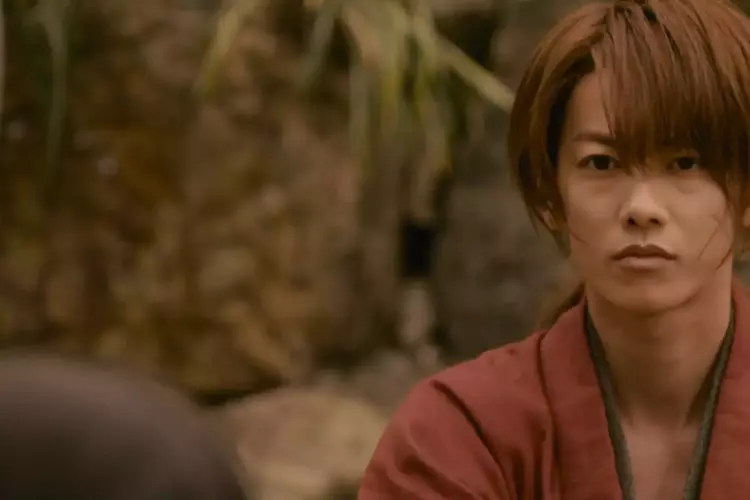
The third installment of the hit Japanese action franchise Rurouni Kenshin Origins is a fantastic film. Tanigaki exemplifies the art of a Japanese action film director by incorporating elements of chanbara imagery. This style, which began in the 1920s, includes bravura camera movements and elaborate choreographies. Tanigaki extends the action to the hero’s entire body, pushing the actors to their physical limits.
The story of Rurouni Kenshin Origins begins before the protagonist meets Megumi. A policeman, Saito Hajime, has learned of Kenshin’s talent from his previous life and wants to use it to crack down on an underground cartel. However, Kenshin declines the policeman’s offer. In this film, his skills become invaluable to Saito’s investigation, which makes the policeman want to take Kenshin under his wing.
The film and manga are largely the same. Both portray the same cast. Yosuke Eguchi plays Saito, and Emi Takei plays Kaoru. While many fans felt that Takei was too pretty for the role of Kaoru, the film shows that she has the right look for the part. The manga version also features Hiruma Gohei and Genki Sudo, two of the Shinsengumi.
While the manga is about violence and breaking people’s will, the film focuses on how the two elements combine to form a complete, compelling story. The film shows the human totem and the Sakabato as two essential components of the series mythology. They represent the character’s inner conflicts. They are both a symbol of the struggle that Kenshin faces. The film makes a strong case for a Japanese martial arts franchise that has a worldwide audience.
Rurouni Kenshin II: Kyoto Inferno (2014)

This sequel to the live-action film Rurouni Kenshin: Origins is just as technically impressive as its predecessor. The kinetic, fast-paced action sequences are expertly choreographed and complemented by effective production design. While the main character, Himura Kenshin, is no longer a child, he is now asked by his rival Saito Hajime to help put an end to the terror in Kyoto. The movie’s soundtrack is filled with electronica, classical music, and a Japanese pop-rock number. The film was released in the Philippines on August 14, 2014, a little over two years after the live-action Rurouni Kenshin films.
The first half-hour of Kyoto Inferno is brimming with visceral entertainment and witty comments about an awkward situation. Set in the early Meiji Restoration, the anime marks the return of Japan from a feudal shogunate to a modern empire. The anime follows the rebirth of Japan after World War II. The nation returns to modernity and industrialization and has equal standing with the US and Europe.
Rurouni Kenshin III: The Legend Ends (2014)

The Rurouni Kenshin Legend End’s final chapter is a thrilling conclusion to the series. It’s a great way to end the series, especially if you’re a Kenshin fan. After all, the anime series has been around for nearly 20 years, so it’s no surprise that its fans love it. Here’s a look at some of the most memorable moments in the manga and anime series.
The Legend Ends is the third installment of the Rurouni Kenshin trilogy and is based on the Kyoto arc of the manga series. The film features multiple fight scenes as well as static conversations about ideals and relationships. As the characters prepare to face one another in the final battle, both Kenshin and Hiko test their swords and learn what their abilities are. While watching the movie, I couldn’t help but think of the best way to end the series: by giving Kenshin and Hiko their duel.
Although the series’ first battle between the main characters is a drawn-out affair, the anime makes the events more intense and realistic. Hiko’s outfit is also an important element of the series, and it is represented in a number of ways. In the anime, her outfit consists of a blue gi with a white cape. The red gi has a small red cape on the top, which is used to display the title “Hiko Seijuro.” The anime also uses the concept of conservation of ninjutsu to show the four protagonists facing off one-on-one against Shishio’s army of mooks.
Rurouni Kenshin IV: The Final (2021)

The plot of the Rurouni Kenshin Final revolves around the events leading up to the conclusion of the manga series. In the first part of the manga, Enishi is arrested and breaks down while reading the diary of his late sister, Tomoe. The second part of the manga series sees Kenshin and Kaoru traveling to Tomoe’s grave to atone for the crimes they committed.
The Final is a live-action adaptation of the manga series, which wraps up a major story arc. As the story moves on, Enishi seeks revenge for her sister’s death, and the Shanghai mafia enters Tokyo. This final part of the manga is filled with action, and fans of the series will surely enjoy it. However, the movie has some shortcomings, so be warned.
The film is a faithful adaptation of the manga series, but there are some notable differences. Although the film’s plot is similar to the manga, there are some parts that are not faithfully translated. This is because the film’s writers and directors often take liberties with the source material. However, “Rurouni Kenshin: The Final” still maintains the integrity of the manga series, but the manga version takes some liberties with the original story.
Rurouni Kenshin V: The Beginning (2021)
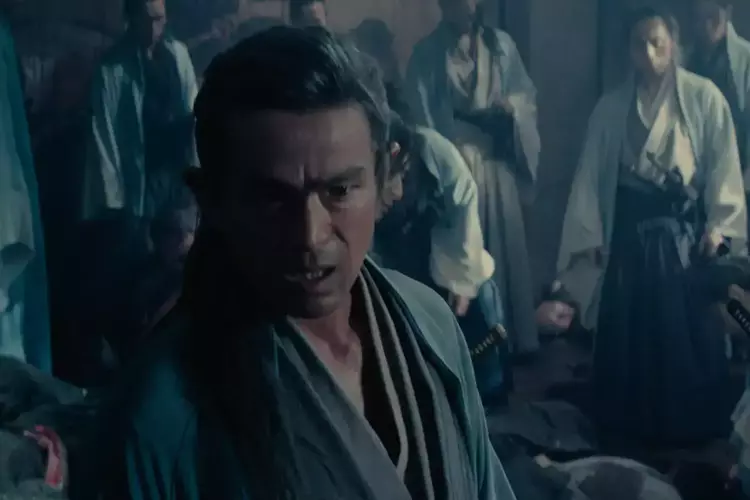
The first part of the series, Rurouni Kenshin: The Beginning takes place before the events of the first film, Rurouni Kenshin: the Final. It tells the origin story of Kenshin and explains how he got his distinctive cross-shaped scars. It also links to Rurouni Kenshin: The Final, which centers on Kenshin’s fight with the brother of Tomoe, Enishi. Enishi has been preparing to exact revenge on Kenshin after the death of his sister.
The series was critically acclaimed for its blend of heightened realism and fantastical elements, which helps it stand out in the vast repertoire of costume drama films. Kenji Tanigaki, the acclaimed actor who portrayed Battosai in the first two films, has perfected the blending of martial arts, Japanese swordsmanship, and Wuxia in Rurouni Kenshin: The Beginning.
The Beginning is based on a manga series of the same name. It is a prequel that explores the life of frightened swordsman Himura Kenshin, or Battosai. The film also explores Kenshin’s relationship with Tomoe Yukishiro, his love life, and his pledge to protect the revolution until a new age arrives. In addition to the plot of the manga series, Rurouni Kenshin: The Beginning is an interesting prequel to the series, and also includes references to the first film.
How to Watch Rurouni Kenshin Movies in Order?
Swap part 4 and part 5 to watch the prequel first. If you prefer to go according to release dates then that’s fine as well. It all depends on how you like the sequence of events to come out. We here prefer to watch the prequel (part IV) last because it makes for a more powerful experience.
Where Do I Watch Rurouni Kenshin? Is Rurouni Kenshin On Netflix?
- The Anime Series – Hulu
- The Live-Action Movies- Netflix
- The OVA Trust and Betrayal – Netflix
- The OVA Reflection – MangaTV on Roku
Final Thoughts
This Anime, OVAs, and the Live-Action movies are highly recommended even for non-fans of the sub-genre. The stories are simple but elegant in their simplicity. Most of the details are even highly historically accurate, which makes them even more engaging.
/
